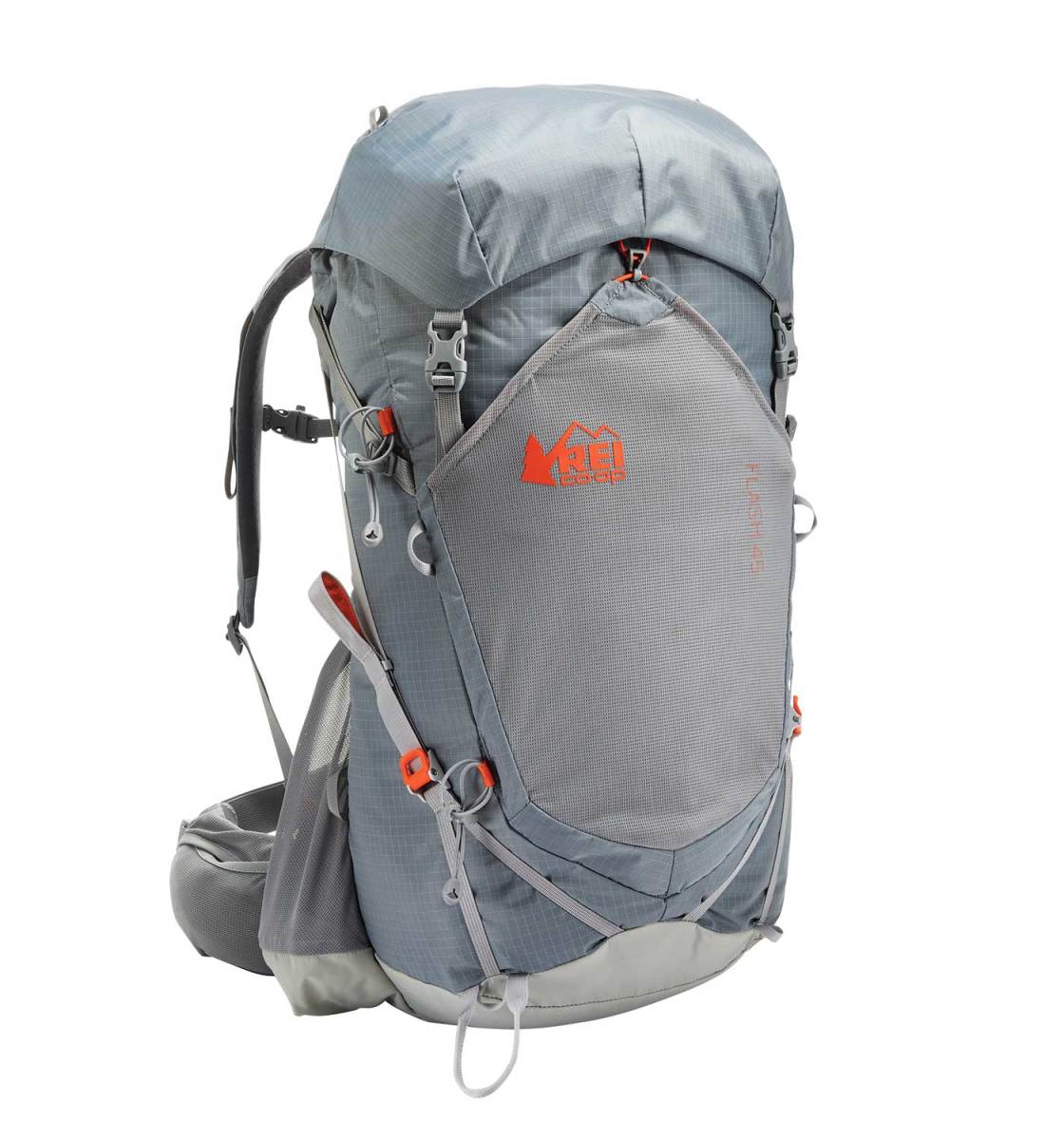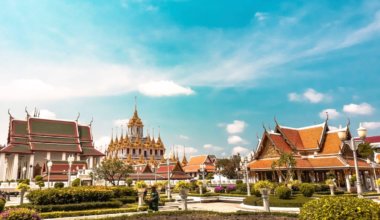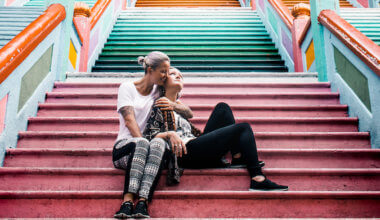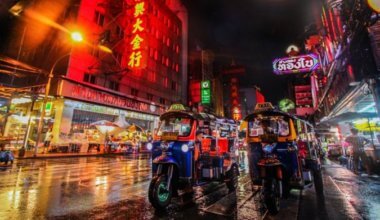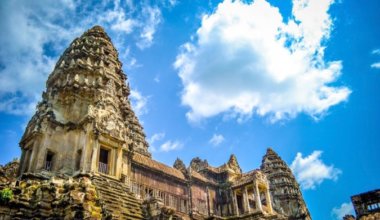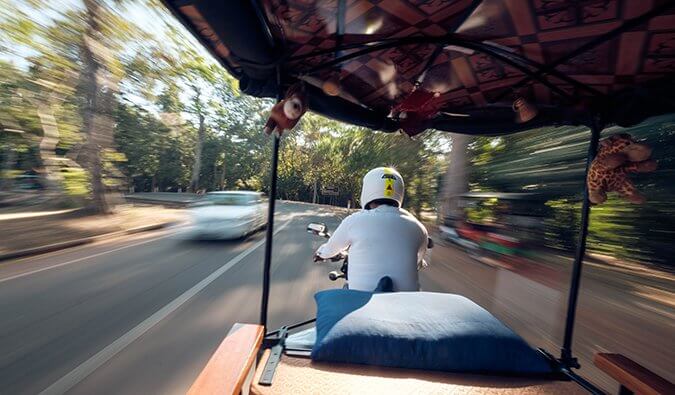
The travel trail through Southeast Asia is well worn. People have been backpacking Southeast Asia since the late 1960s / early 1970s.
Starting in beautiful Thailand, the trail makes its way to up-and-coming Laos, through Vietnam, and through the temples of Angkor Wat. It then heads back into Thailand, where people head south to party in the Thai islands before moving down to into Malaysia and Singapore.
There are a few variations to the trail but this is what it mostly covers.
Southeast Asia is a great region for new travelers because it’s easy to travel around, it’s safe, and there are lots of other travelers around.
I’ve been visiting this region since 2004 and spent years living in Thailand. I love backpacking Southeast Asia and have written extensively about it. I know it like the back of my hand.
Even if you don’t want to backpack Southeast Asia, the region is home to plenty of resorts, beautiful hotels, world-class restaurants, private buses and cars, and everything you need to have a luxurious holiday on a budget.
Southeast Asia has something for everyone.
This Southeast Asia travel guide will tell you how to travel and backpack the region like a pro, what to do avoid, how much things cost, the best things to see, and everything in between! You should use this guide if you’re looking to a) backpack Southeast Asia, b) looking for ideas on thing to do, or c) trying to travel on a budget.
Table of Contents
Click Here for Country Guides

Southeast Asia
Top 5 Things to See and Do in Southeast Asia

1. Admire Angkor Wat

2. Explore Bangkok

3. Situate yourself on some tropical islands

4. See Halong Bay

5. Visit Kuala Lumpur
Other Things to See and Do in Southeast Asia
There is a lot to do and see in Southeast Asia and trying to list everything on one page would be too difficult to do. Be sure to visit our Thailand travel guide, Laos travel guide, Vietnam travel guide, Singapore travel guide, Malaysia travel guide, Cambodia travel guide, and Indonesia travel guide for specifics on what to do and see in those specific countries. You’ll get extensive lists! However, below is a list of my top top places to visit while backpacking around Southeast Asia:
1. Go jungle trekking
No matter where you do it, jungle trekking is a must for any traveler. The area is covered in amazing jungles with a diverse wildlife. These lush forests contain a lot of wildlife and camping opportunities. You’ll be able to see cool waterfalls too. The best jungle treks are found in northern Thailand, western Laos, and Malaysia Borneo (these are also the hardest and most intense).
2. Attend the Full Moon Party
The biggest one-night party in the world can sometimes see up to 30,000 people. Party until dawn covered in glow paint and dance the night away with new friends on the island of Ko Phangan in Thailand. As the name would suggest, the party is on the night of the full moon. If you miss it, there s always the half-moon party, quarter-moon party, and black-moon party. Really, every night is a party here on Koh Phangan. There s no airport on the island, so everyone comes by ferry. You can come via Surat Thani on the mainland or from the nearby island of Koh Samui.
3. Learn to dive
There are many great dive sites around the region. Learn to dive here at a fraction of what it would cost back home. Some of the best places are Ko Tao (Thailand), Sipidan (Malaysia), as well as Indonesia and the Philippines. Ko Tao is especially a great place to learn how to dive, and the typical diving course is completed in three days. A PADI course will typically run you 9,800 THB ($300 USD), including three nights accommodation, though at smaller schools you can often negotiate down to 9,000 THB ($275 USD). An SSI course will not go above 9,000 THB ($275 USD) with accommodation. If you re arranging your own accommodation, you can get a PADI course for 8,500 ($260 USD) or an SSI for 7,500 ($230 USD).
4. Eat in Singapore
Thought Thailand had great food? Try the hawker stalls of Singapore for great eats. Don t forget to also visit Little India (where great Indian meals cost as little as $5 SGD/$4 USD!) and Chinatown. They have some of the best and cheapest food in Asia! If you re looking for a nice place to sit down and eat, then the best time to eat at Singapore s famed restaurants is during lunch when restaurants offer 20% off, making them a great deal. The set lunches will give you dinner food at a discount and allow you a bit more variety in what you re eating.
5. Get your temple overload
There s a lot of everything in Southeast Asia lots of food, islands, clothes, drinking, and lots of temples. You can t turn a corner without seeing a Buddhist temple. You ll get temple overload at some point, but visit as many as you can as each is unique to the country and region of the temple. Check out Chiang Mai, Bagan, Angkor Wat, Hue, Hoi An, and Luang Prabang for places with high concentrations of ornate and beautiful temples.
6. Dive Sipidan
Located off Malaysian Borneo, Sipidan is one of the best dives sites in the world. If you have your dive certificate, make sure you venture out here. Not a lot of people make it to this part of Malaysia but there s a lot to see here besides diving. Go the extra mile, and make your way off the tourist trail a bit. Sipadan is arguably one of the best five dive sites in the world. The place is teeming with life. You will see turtles, cave systems, sharks, dolphins, schools of fish, bright coral, bright fish, and everything in between.
7. Fall in love with Bali
Bali is the most popular destination in Indonesia. Its famous Kuta beach (overrated) and is known for its parties and surfing. However, there is much more to Bali than just wild nights and sun-soaked days. Many beaches are great for families, while the rice terraces in the center will show you what green really is, and Ubud is an artistic town with great food and traditional dancing. Cheap guesthouses and hostels usually cost around 120,000-200,000 IDR ($8-13 USD) per night. Most hostels do not offer private rooms, though free WiFi and free breakfast are generally included.
8. Take in Ho Chi Minh City
Frantic, chaotic, and crazy, Ho Chi Minh City in Vietnam is the embodiment of the controlled chaos that rules Southeast Asia. You can t quite figure out how this teeming mass of people and cars work together, but it does.
9. See the sunrise over an Indonesian Volcano
One of the most popular tourist attractions on Java is Mount Bromo and its National Park. You ll not want to miss out on getting a snap of the smoldering Bromo volcano as it lies surrounded by the almost lunar landscape of the Sea of Sand. If you re there in mid-August, you ll be just in time to see Upacara Kasodo, the monthly ritual which the Tenggerese take part in. Get up early to catch one of the most memorable sunrises of your life.
10. Visit Khao Sok National Park
Located in the south of Thailand, Khao Sok National Park is constantly rated as one of the best in Thailand, with incredible trekking, camping, limestone karsts, cooling rivers, and a glistening lake. You ll find semi-challenging hikes, tons of wildlife, walking paths, and incredible sunsets. Park entrance costs 200 THB ($6 USD).
11. Visit Kampot
Most people come to Kampot to enjoy the scenic riverside views, as well as the rolling hills that surround the city. Since you can explore easily enough on foot or by bicycle, Kampot is a great place to slow down and relax. Don t miss the pepper farms, the mangroves, and the national park.
Be sure to visit our Southeast Asian country travel guides for more detailed information about what to see and do in each place:
Southeast Asia Travel Costs
Accommodation – Accommodation in Southeast Asia is really cheap, especially if you are traveling on a budget or backpacking. You can find dorm rooms for as little as 8,000-20,000 KHR or 16,000-40,500 LAK ($2-5 USD) in parts of Cambodia and Laos. In Thailand, you will typically pay 200-440 THB ($6-15 USD) per night. In Vietnam, expect to pay 100,000-175,000 VND ($5-8 USD). In Indonesia, between 100,000-135,000 IDR ($8-10 USD). Throughout the region, you typically expect to pay around $15-20 per night for a private room with A/C.
Simple guesthouses throughout Southeast Asia generally cost $10 USD per night for a basic room, fan (sometimes air- conditioning), and hot water. If you want something nicer that includes a more comfortable bed and a TV, expect to pay $15 20 USD per night. If you want the bare basics (small rooms and not the comfiest beds), you can find rooms for as little as $5 USD per night, especially in rural areas.
For backpackers, budgeting $10-20 USD per night for accommodation is pretty safe no matter where you go in Southeast Asia. If you’re looking for something higher end or with A/C, expect to pay $20-50 per night for a room. Anything over that and the sky is the limit!
Food – While traveling Southeast Asia, street food is the most popular form of eating. On average, these meals cost no more than $1.50 USD. You find these stalls throughout this region lining major streets and at the markets. In Thailand, you even find markets specifically for street food. In Singapore, you ll find street food (or 'hawker stands' as they are called there) to be around 4.25 SGD ($3 USD) for a meal. Even if you go into small local restaurants, the price does not increase that much.
Food you can find for $2 USD at a street stall will only cost $3-5 USD at a local restaurant. If you went into a restaurant in Thailand, you d pay around 135 THB ($5 USD) for a pad Thai that would have cost 35 THB ($1 USD) on the street. In Cambodia, street food, which isn t as abundant as I would like it to be, is around 4,070 KHR ($1 USD), while restaurants charge around 12,215 KHR ($3 USD) for a local dish like amok (coconut milk dish) or luc lac (pepper gravy beef).
Western meals, including burgers, bad pizza, and sandwiches, cost around $5 USD for cheaply made food. This is going to be the most expensive part of your food budget in this region. If you want something that actually tastes like it does back home, you re looking at spending at least $10 USD for your meal.
Additionally, in the big cities like Bangkok, KL, or Singapore, you’ll find world-class Michelin star meals. There’s a growing cutting-edge foodie scene in the region and, if you want to splurge, you’re going to find some really good meals.
Activities – Activities in Southeast Asia are pretty cheap. Most Buddhist temples throughout the area are free to enter, though some of the more famous and larger ones, like Wat Phnom in Phnom Penh, Cambodia; Wat Pho in Bangkok, Thailand; the Temple of Literature in Hanoi; and Vat Xieng Toung in Luang Prabang, Laos, cost $3 5 USD to enter. Most day tours only cost around $20 USD, often times less. If you are going jungle trekking, seeing elephants, climbing mountains, or doing overnight trips, prices can go as high as $50 USD.
Learning to scuba dive will set you back $300-400 USD, but on the island of Ko Tao in Thailand, the course is 9,930 THB ($300 USD) and includes free accommodation for the duration of the course, which lasts three or four days. The three-day pass to Angkor Wat is 252,820 KHR ($60 USD). Jungle trekking costs 1,000-1,685 THB ($30-50 USD) per day, though you can usually get better prices in groups. White-water rafting will cost around 200 MYR ($45 USD). For everything else, check the country and city guides for prices on various activities.
Backpacking Southeast Asia Suggested Budgets
How much does it cost to visit Southeast Asia? Not that much! In Southeast Asia, if you’re backpacking and traveling on a budget, you need around $25-35 USD per day tog et by. This is a suggested budget assuming you re staying in a hostel (dorms or cheap guesthouses), eating out at local markets and street stalls, not drinking a ton, and using local transportation. Southeast Asia travel doesn’t have to be too expensive.
If you want to live a little and spend more, you’re looking at closer to $50 USD per day and that would include nicer accommodation, more Western food, flights, and nicer bars! However, in general, the region is pretty cheap and if you stick to doing what the locals do, you’ll be hard pressed to spend much money.
Southeast Asia Travel Guide: Money Saving Tips
Backpacking Southeast Asia is really cheap. You can get by on as little as $15 USD per day if you want (though $25 USD is more realistic). There s little opportunity to really spend a lot of money since everything is already so inexpensive. The two reasons why most people end up overspending is that they eat a lot of western food and drink way too much. If you want to save money while traveling in this part of the world, cut down your drinking and Western food. After all, did you travel halfway around the world to eat a crappy burger? Doubtful. If you drink a lot or eat Western food, you ll end up spending close to $35-45 USD per day.
How do you save money in Southeast Asia then? Here are a few hacks to cut down your costs:
- Couchsurf – Accommodation is cheap in Southeast Asia but nothing s cheaper than free! Use Couchsurfing to stay with locals who have extra beds and couches for free. You’ll meet great people too that can show you around. It’s one of my favorite travel services out there and I always walk away with friends.
- Book tours and day trips as a group – You have more negotiation power when you re with a group of people buying multiple things. Traveling alone? Meet a friend at a hostel and see if they want to join the same tour as you.
- Don’t book in advance – Don’t book any tours or activities before you get to your destination. They’ll be much cheaper when you arrive as you’ll be able to negotiate a lower price. Anything you see online is going to be more expensive than you need to pay!
- Eat on the street – You can pick up tasty local fare for cheap! Street side snacks, soups, and noodles will keep your wallet fat! Markets are your best bet for finding seriously cheap and delicious food. Street stalls are the staple diet of locals in the region and should be your staple too. The food is the best too.
- Bargain hard – Nothing is ever at face value here. Bargain with sellers as most of the time, the price they ve quoted is way higher. There’s a haggling culture in the region so play the game and save some money. You’ll never get the local price but you might come close!
- Minimize your drinking – Drinks really add up. Even with cheap drinks, if you re not aware, you ll end up spending more money on beer than on food and accommodation.
- Pack a water bottle – A water bottle with a purifier will come particularly in handy in Southeast Asia since you can’t drink the tap water. Save money and thousands of plastic bottles and get a bottle that can purify the tap water for you. My preferred bottle is LifeStraw ($49.99).
Where To Stay in Southeast Asia
I’ve been traveling Southeast Asia since 2005 and have stayed in hundreds of places – some of them were really shitty too. I’ve been a backpacker there for ages and have accumulated a long list of places to stay. Here are some of my favorite places to stay in Southeast Asia:
Laos
- Indigo House Hotel (Luang Prabang)
- Real Backpackers (Vang Vieng)
- Dream Home Hostel (Vientiane)
Thailand
- Green House Hostel (Bangkok)
- Mad Monkey Hostel (Bangkok)
- D&D Inn (Bangkok)
- Julie Guesthouse (Chiang Mai)
- Pooh s (Ko Lipe)
- Green Leaf (Khao Yai)
- Pineapple Guesthouse (Phuket)
Cambodia
- The Siem Reap Hostel (Siem Reap)
- Monkey Republic (Sihanoukville)
Vietnam
- The Common Room Project (Ho Chi Minh City)
- Under the Coconut Tree Guesthouse (Hoi An)
For more places to stay, check out our countries guides to each country: Thailand, Laos, Vietnam, Singapore, Malaysia, Cambodia, and Indonesia.
How to Get Around Southeast Asia
The easiest and cheapest way to travel around Southeast Asia is by bus. A bus will take you everywhere and anywhere you want to go, no matter how far. The backpacker trail is so worn that there is a very well established and oiled tourist bus system to take you anywhere. Buses costs vary between $5-10 USD for a 5-6 hours journey. Overnight buses cost $10-15 USD depending on distance. Local public transportation costs from a few pennies to a few dollars.
Taxis and tuk-tuks (small shared taxis with no meter) will require a bit of haggling and cost more than local transportation. Taxis and tuk-tuks are normally double to triple what the local transportation is and you often have to haggle for the price. They start really high and you work towards something you are willing to pay. Eventually, you come to a conclusion, which is usually about half the price they started with.
In Singapore and Indonesia, taxi drivers do put on the meter. In Bangkok, you can get taxi drivers to use the meter, but if you re hailing one in a tourist area, he might try to avoid using it. In Vietnam, the meter is usually rigged, but if you can get a reputable company like Mai Linh, you won t have any problems.
Train service is limited in the region and not something to really consider when you travel Southeast Asia. It just doesn’t go many places. You can take a train up and down the coast of Vietnam, though it is slow and expensive. Thailand is the only country that has an extensive train system that let’s you travel all it’s regions (and onward to Singapore) from Bangkok.
The train prices in Southeast Asia are determined by distance and class, so the farther you go, the more you pay. Night trains with sleeper cars are more expensive than day trains. The night train to Chiang Mai from Bangkok takes twelve hours and costs 965 THB ($30 USD) for a sleeper seat. However, that same train during the day is 300 THB ($10 USD). In Vietnam, trains run up and down the coast and cost 1,445,445 VND ($60 USD) from Hanoi to Ho Chi Minh City.
In short, do this to get around when you’re backpacking Southeast Asia (or just looking to use local transportation): Take the train as often as you can in Thailand, take buses everywhere else, take the train in Vietnam if you have the time. Remember day trains are always cheaper.
When to Go to Southeast Asia
The best time of the year to visit Southeast Asia is from November to April, when temperatures are more mild. This is the regions high season too. However, temperatures vary drastically in this region. It may be mild in Thailand in January and hot in Malaysia but in Northern Vietnam, it’s cold!
Here is a breakdown of each country so you can know when to visit:
In Indonesia, the best time to visit is April to October. Temperatures average 24-30?C (75-86?F), and the weather is mostly dry. July to September is peak holiday season and when you can expect to pay the highest rates. December to February is the rainy season.
In Malaysia, January-March and June-September are the best time to visit, as these months have the lowest average rainfall. It will still be hot and humid, though! The rainy season is from October to December. Singapore’s climate/weather is much like Malaysia’s.
In Vietnam, the weather varies. In Central Vietnam (like Hoi An and Nha Trang), January to May is the best time to visit because it is dry and the temperatures average 21-30?C (70-86?F).
June to August is also okay. If you want to stick around Hanoi, March to April is great, or October to December (for mildest temperatures). Rainy season is May to September.
Thailand has three seasons: hot, hotter, and hottest. It’s always warm, though the weather is nicest between November and February (which is also peak tourist season). April and May are the hottest months and the rainy season is June-October. The gulf islands get pretty rainy from August to December. November to the end of February is the best time to visit Thailand. Bangkok is “coolest” during this time (but still averaging a hot 29?C/85°F), and and also the driest. Avoid rainy season (July to October).
The dry season in Cambodia is from November-May, and the cool season is from November-February (this is when most people visit). Temperatures during this time are still high, but humidity is lower. Laos has the same cool season as Cambodia, which dry season running from November-April.
Overall, if you’re visiting Southeast Asia, November-April is generally the best time to visit.
How to Stay Safe in Southeast Asia
Southeast Asia is an incredibly safe place to backpack and travel – even if you’re traveling solo, and even as a solo female traveler. Violent attacks are rare. Petty theft (including bag snatching) is the most common type of crime in Southeast Asia. There are some common scams around, like the motorbike scam where vendors try to charge you for damage to their bike, but for the most part, this is a safe place to travel. People are nice and helpful and you’re unlikely to get into trouble. The people who do tend to be involved with drinking or drugs or sex tourism. Stay away from that stuff and you’ll be fine.
Always trust your gut instinct. If a taxi driver seems shady, stop the cab and get out. If your hotel is seedier than you thought, get out of there. You have every right to remove yourself from the situation. Make copies of your personal documents, including your passport and ID. Forward your itinerary along to loved ones so they’ll know where you are.
If you don’t do it at home, don’t do it when you’re in Southeast Asia. Follow that rule and you’ll be fine.
Worried about travel scams? Read about these 14 Major Travel Scams to Avoid and be in the know! There aren’t many in the region but the few there are can be quite expensive!
For more in-depth coverage of how to stay safe in Southeast Asia, check out this post we wrote that answers some frequently asked questions and concerns.
The most important piece of advice I can offer is to purchase good travel insurance. Travel insurance will protect you against illness, injury, theft, and cancellations. It’s comprehensive protection in case anything goes wrong. I never go on a trip without it as I’ve had to use it many times in the past. You can use the widget below to find the policy right for you:
Southeast Asia Travel Guide: The Best Booking Resources
Below are my favorite companies to use when I travel to Southeast Asia. They are included here because they consistently turn up the best deals, offer world-class customer service and great value, and overall, are better than their competitors. They are always my starting point when I need to book a flight, hotel, tour, train, or meeting people!
- Momondo – This is my favorite flight search engine because they search such a wide variety of sites and airlines. I never book a flight without checking here first.
- Skyscanner – Skyscanner is another great flight search engline which searches a lot of different airlines, including many of the budget carriers that larger sites miss. While I always start with Momondo, I use this site too as a way to compare prices.
- Airbnb – Airbnb is a great accommodation alternative for connecting with homeowners who rent out their homes or apartments. The big cities have tons of listings!
- Hostelworld – This is the best hostel accommodation site out there, with the largest inventory, best search interface, and widest availability.
- Agoda – Other than Hostelworld an Airbnb, Agoda is the best hotel accommodation site for Asia as it has the largest inventory and offers the best rates. If you want a guesthouse or hotel, book it via this website!
- Intrepid Travel – If you want to do a group tour around Southern Asia, go with Intrepid Travel. They offer good small group tours that use local operators and leave a small environmental footprint. If you go on a tour with anyone, go with them. And, as a reader of this site, you’ll get a discount when you click the link!
- Grassroots Volunteering – For volunteering, Grassroots Volunteering compiles a list of good local volunteer organizations that keep the money within the community.
- World Nomads – I buy all my travel insurance from World Nomads. They have great customer service, competitive prices, and in-depth coverage. I ve been using them since I started traveling in 2003. Don’t leave home without it!
countrynamehere Gear and Packing Guide
If you’re heading on the road and need some gear suggestions, here are my tips for the best travel backpack and for what to pack!
The Best Backpack for Travelers
Size: 45-47L
Straps: Thick and cushy with compression technology that pulls the pack s load up and inwards so it doesn’t feel as heavy.
Features: Removable top lid, large pocket at the front, hydration compatible, contoured hip belt
If you want something different, refer to my article on how to choose the best travel backpack for tips on picking a pack and other backpack suggestions.
What to Pack for Your Trip
Clothes
- 1 pair of jeans (heavy and not easily dried, but I like them; a good alternative is khaki pants)
- 1 pair of shorts
- 1 bathing suit
- 5 T-shirts
- 1 long-sleeved T-shirt
- 1 pair of flip-flops
- 1 pair of sneakers
- 6 pairs of socks (I always end up losing half)
- 5 pairs of boxer shorts (I’m not a briefs guy!)
- 1 toothbrush
- 1 tube of toothpaste
- 1 razor
- 1 package of dental floss
- 1 small bottle of shampoo
- 1 small bottle of shower gel
- 1 towel
- Deodorant
Small Medical Kit (safety is important!!!)
- Band-Aids
- Hydrocortisone cream
- Antibacterial cream
- Earplugs
- Tylenol
- Hand sanitizer (germs = sick = bad holiday)
Miscellaneous
- A key or combination lock (safety first)
- Zip-lock bags (keeps things from leaking or exploding)
- Plastic bags (great for laundry)
- Universal charger/adaptor (this applies to everyone)
- LifeStraw (A water bottle with a purifier)
Female Travel Packing List
I’m not a woman, so I don’t know what a woman wears, but Kristin Addis, our solo female travel guru, wrote this list as an addition to the basics above:
Clothing
- 1 swimsuit
- 1 sarong
- 1 pair of stretchy jeans (they wash and dry easily)
- 1 pair of leggings (if it’s cold, they can go under your jeans, otherwise with a dress or shirt)
- 2-3 long-sleeve tops
- 2-3 T-shirts
- 3-4 spaghetti tops
- 1 light cardigan
Toiletries
- 1 dry shampoo spray & talc powder (keeps long hair grease-free in between washes)
- 1 hairbrush
- Makeup you use
- Hair bands & hair clips
- Feminine hygiene products (you can opt to buy there too, but I prefer not to count on it, and most people have their preferred products)
For more on packing, check out these posts:
Southeast Asia Travel Guide: Suggested Reading
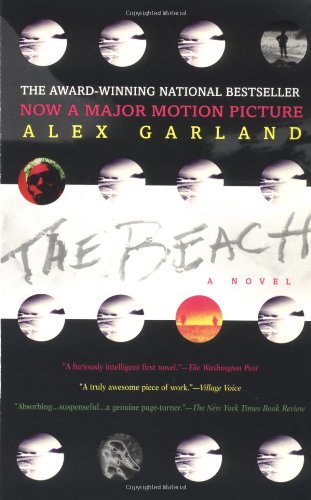 The Beach, by Alex Garland
The Beach, by Alex Garland
This story about backpackers and their search for off-the-beaten path “authentic” paradise is one many of us can relate to. Following Richard and his quest to “do something different” in Thailand, he heads off the beaten path in hopes of an authentic experience but finds that things aren’t always what they appear. The book is part adventure and part an exploration of why travelers always search for utopias and the consequences of that quest. It was turned into a movie featuring Leonardo DiCaprio back in the 90s. However, the book is a lot different (and much better). Focusing on the ideal of travel, I can’t recommend the book enough.
 Eating Vietnam, by Graham Holliday
Eating Vietnam, by Graham Holliday
While I don t love Vietnam (I didn t have a good experience there), I do love Vietnamese food… a lot! This is an awesome book about the history and culture behind the country s street cuisine. Author Graham Holliday has lived in Vietnam a long time, and he sure knows his food. In this engrossing and hunger-inducing book, you ll wander with him through the backstreets of Vietnam, learning about the street food you see all over the country and, in doing so, begin to understand the country and its people through their first love. The introduction is even written by Anthony Bourdain!
 First They Killed my Father, by Loung Ung
First They Killed my Father, by Loung Ung
This is the real life story of Loung Ung, one of seven children of a high-ranking government official living in Phnom Penh until the age of 5. When Pol Pot’s Khmer Rouge army invaded the city in 1975, Ung’s family had to flee and eventually separate. Loung became a child soldier while her siblings were sent to work camps, and this book recounts the devastating horrors she encountered along the way. The documentary of the same name (directed by Angelina Jolie!) is also amazing.
 The Sympathizer, by Viet Thanh Nguyen
The Sympathizer, by Viet Thanh Nguyen
This is Viet Thanh Nguyen’s first novel, and it won the Pulitzer Prize for Fiction. The story focuses on the narrator, a communist double agent who lives two lives — a half-French, half-Vietnamese army captain who comes to the United States after the Fall of Saigon, but while building a life with other Vietnamese refugees in LA is reporting back to his superiors in Vietnam. It’s a unique look at post-war Vietnam, and one that’ll have you gripped right from the beginning.
The Backpacker, by John Harris I picked up this book at a second-hand shop in Vietnam years ago, and it intrigued me as I was backpacking around Southeast Asia. Amazon suggested it to me recently, so I picked it up again for another read and found it just as enthralling! John travels to India, where he meets Rick, who then persuades him to go to the Thai island of Ko Phangan, where John, Rick, and their new friend Dave pose as millionaire aristocrats. after getting on the wrong side of the Thai mafia, they leave for adrenaline-fueled journeys to Singapore, Indonesia, Australia, and Hong Kong. I ve always wondered if this was a true story since so much of it seems far-fetched, but, even if it’s all fake, it s an entertaining read about life as a backpacker. Light, easy, and fun, it will get you excited for the road.
I picked up this book at a second-hand shop in Vietnam years ago, and it intrigued me as I was backpacking around Southeast Asia. Amazon suggested it to me recently, so I picked it up again for another read and found it just as enthralling! John travels to India, where he meets Rick, who then persuades him to go to the Thai island of Ko Phangan, where John, Rick, and their new friend Dave pose as millionaire aristocrats. after getting on the wrong side of the Thai mafia, they leave for adrenaline-fueled journeys to Singapore, Indonesia, Australia, and Hong Kong. I ve always wondered if this was a true story since so much of it seems far-fetched, but, even if it’s all fake, it s an entertaining read about life as a backpacker. Light, easy, and fun, it will get you excited for the road.
My Books to Southeast Asia
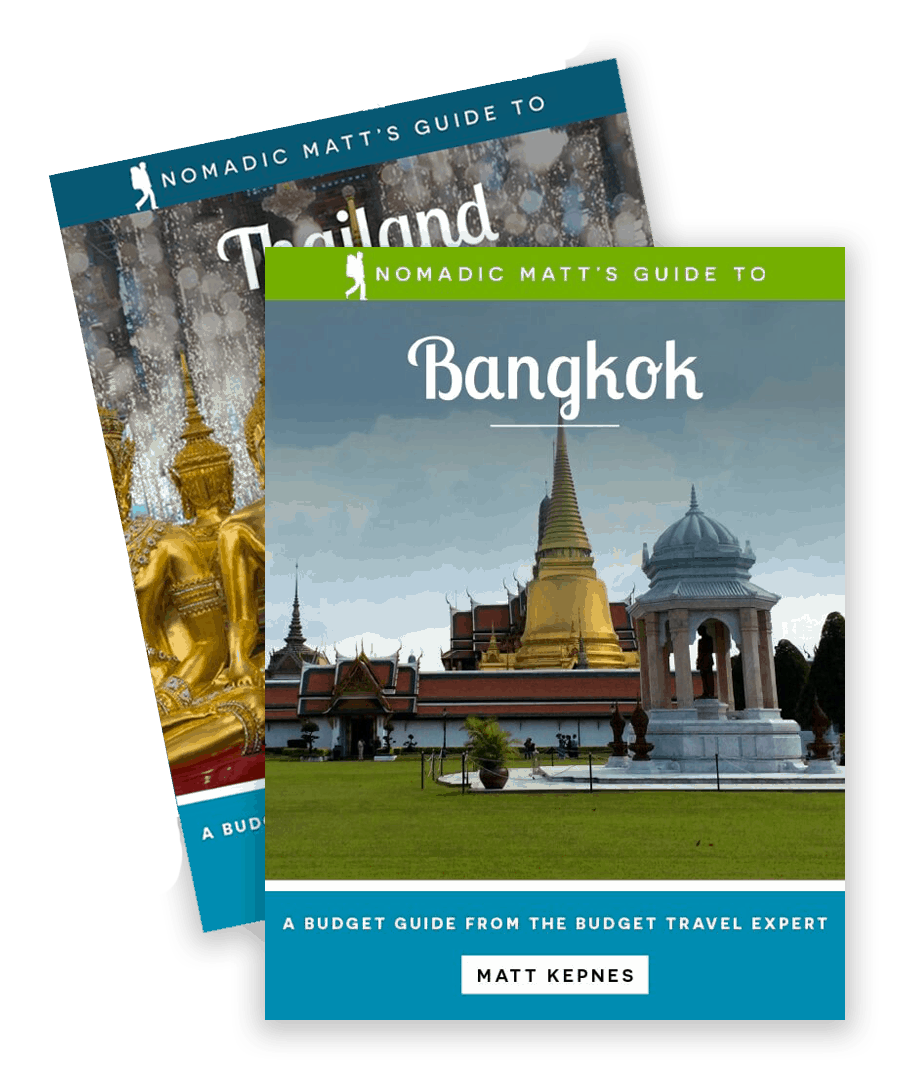
Forget the other guidebook companies! With my guidebooks, you ll get to see the region the way it s meant to be seen. You’ll get off the beaten path, away from crowds, and see the local side of Southeast Asia visiting my favorite sights, restaurants, bars, and attractions! I use my detailed experience to show you the attractions, give you the suggested itinearies, money saving tips, places to stay and eat and drink that you won’t find in mainstream guides. Get away from the tourists and travel like a pro!
Southeast Asia Travel Guide: Related Articles
Want more info? Check out all the articles I’ve written on Southeast Asia travel and continue planning your trip:
